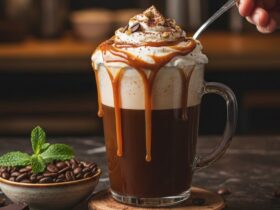Does launching your juice business seem impossible because of the complex packaging regulations? You’re not alone.
Stringent regulation of the juice industry exists to protect consumers and maintain quality while promoting environmental responsibility. Without proper guidance the task of understanding these regulations feels impossible like squeezing juice from a rock.
Here’s the good news:
Navigating packaging compliance requirements need not be a difficult task. A strategic approach allows you to satisfy all product requirements and create a distinctive brand that catches attention on store shelves.
What You’ll Discover Inside
- Essential Juice Packaging Regulations You Need to Know
- FDA Requirements for Juice Product Labeling
- Sustainable Packaging Trends and Requirements
- Choosing Compliant Packaging for Your Juice Products
- Practical Steps to Ensure Compliance Before Launch
Essential Juice Packaging Regulations You Need to Know
The first critical action you must take when launching a juice business involves understanding the regulatory requirements which govern the industry. These regulatory requirements serve both to protect consumers and to ensure the safety of products instead of acting simply as bureaucratic obstacles.
The primary regulatory body for the juice industry is the Food and Drug Administration (FDA) which operates under the guidelines of both the Federal Food, Drug, and Cosmetic Act (FDCA) and the Fair Packaging and Labeling Act (FPLA). These regulatory frameworks create a base which applies to both packaging materials and labeling criteria.
How Do These Industry Regulations Influence Your Approach To Packaging?
Packaging that touches juice should have FDA approval and meet food-grade standards. This applies whether you’re using 12 oz juice bottles or larger containers. The materials must not transfer harmful substances to the juice, even during extended shelf life periods.
The Hazard Analysis and Critical Control Point (HACCP) system for juice products is outlined in FDA’s Code of Federal Regulations Title 21, Part 120. The system demands hazard identification followed by preventive action establishment and monitoring implementation along with compliance documentation maintenance.
Many states impose additional regulatory requirements beyond federal standards. The strictest packaging regulations in the country exist in California where Proposition 65 mandates warning labels for products that contain specific chemicals.
Businesses operating in the United States will face transformative packaging regulations from 2025 which will prioritize the use of biodegradable plastics and compostable materials. This transition seeks to lower environmental consequences while ensuring food safety remains uncompromised.
FDA Requirements for Juice Product Labeling
The FDA enforces strict juice labeling rules that you should follow as well. The purpose of proper labeling goes beyond avoiding fines to include establishing consumer trust and delivering crucial product details.
Your juice labels must include:
- Product Identity: A precise description of the product’s nature
- Net Quantity: Your juice labels must show the precise volume of juice contained within.
- Ingredient List: The ingredient list must show all components in descending weight order.
- Nutrition Facts Panel: Displaying calories, nutrients, and serving information
- Allergen Information: Clear identification of any major food allergens
- Business Information: The name and location details of the product’s manufacturer and distributor must be shown on the packaging.
Juice products must follow labeling standards set forth by both the Federal Food, Drug, and Cosmetic Act (FDCA) and the Fair Packaging and Labeling Act (FPLA) according to current regulations. Current regulations provide consumers with reliable product information before purchasing.
When your juice undergoes processing techniques such as pasteurization or high-pressure processing (HPP) these details may need to appear on the product label. The FDA mandates a 5-log decrease in pathogens for juice products unless the packaging displays a warning about the absence of this treatment.
Sustainable Packaging Trends and Requirements
The juice industry is shifting toward sustainable packaging solutions and businesses need to adapt to this trend to ensure long-term success.
Beginning in 2025 the new packaging guidelines will prioritize the adoption of materials that are biodegradable plastics or compostable alternatives as well as paper. Many areas require these environmental practices by law although they also benefit nature.
Starting January 1, 2025 California will require beverage containers such as juice bottles to be made from a minimum of 25% post-consumer recycled content which represents an increase from the current 15% requirement. The beverage industry is actively working towards better recycling practices and sustainable operations.
What Effect Will The New Regulations Have On Your 12 Oz Square Juice Bottles And Your Packaging Selection Options?
You must partner with suppliers who can validate their recycled content levels and explore alternative materials such as bioplastics or plant-based options while conducting a full lifecycle assessment of your packaging and ensuring documentation of compliance with these new standards.
The California Beverage Container Recycling Program now covers fruit and vegetable juices as part of California’s Bottle Bill Expansion which affects labeling and recycling standards. This expansion could provide a template for other states to implement similar programs in the future.
Choosing Compliant Packaging for Your Juice Products
When choosing packaging for your juice products ensure compliance remains your main focus before thinking about aesthetic appeal or marketing potential.
Juice packaging remains dominated by bottle usage especially through 12 oz square juice bottles which provide outstanding visibility, durability and consumer appeal. Juice bottles are commonly produced from glass, PET plastic, or bioplastic materials which require specific regulatory standards for each material.
Juice packaging premiumizes glass because of its chemical inertness and complete recyclability while delivering perfect product visibility and enhanced taste preservation. Despite their benefits, glass bottles need to comply with FDA food contact material regulations and some glass types contain restricted elements such as lead.
The juice industry commonly favors PET (polyethylene terephthalate) and HDPE (high-density polyethylene) plastic bottles because they are lightweight and shatter-resistant while providing lower shipping expenses and design versatility. Industry standards recognize PET as safe for food contact materials yet regulations dictate which specific PET grade is suitable for juice packaging.
When choosing your juice packaging supplier you need to request specifics about their FDA compliance documentation, Material Safety Data Sheets (MSDS), recycled content percentages, migration testing results and how their packaging works with your juice type.
Practical Steps to Ensure Compliance Before Launch
You can avoid thousands of dollars in redesign costs, recall expenses and legal complications by ensuring correct juice packaging at the outset. This practical roadmap provides steps to ensure your packaging meets all necessary regulations.
- Start with thorough research: Examine the newest FDA rules alongside state regulation requirements and analyze how your competitors package their juices.
- Consult with experts: Don’t try to navigate complex regulations alone. You should get advice from food safety consultants and packaging experts along with legal advisors and industry groups.
- Test your packaging thoroughly: Perform shelf-life testing using your juice products to verify material safety through certified laboratories and evaluate chemical migration under multiple conditions.
- Document everything: Keep complete records of every supplier certification together with all your testing methods and quality control measures.
- Stay updated on changing regulations: Keep track of FDA updates and industry news publications while evaluating your compliance approach every year.
Wrapping It All Up
When starting a juice business you will encounter several challenges but you don’t have to include packaging regulations among them. A combination of detailed planning and attention to fine points allows you to produce compliant products while establishing a brand that connects with customers.
It is important to keep up-to-date with regulatory changes that will influence sustainability in the industry after 2025. Ensure compliance takes precedence when choosing packaging materials before aesthetics and maintain a record of all packaging decisions while seeking expert advice whenever you encounter uncertainty.
Your juice business will succeed by maintaining peak food safety standards and environmental responsibility through these guidelines.









Leave a Reply